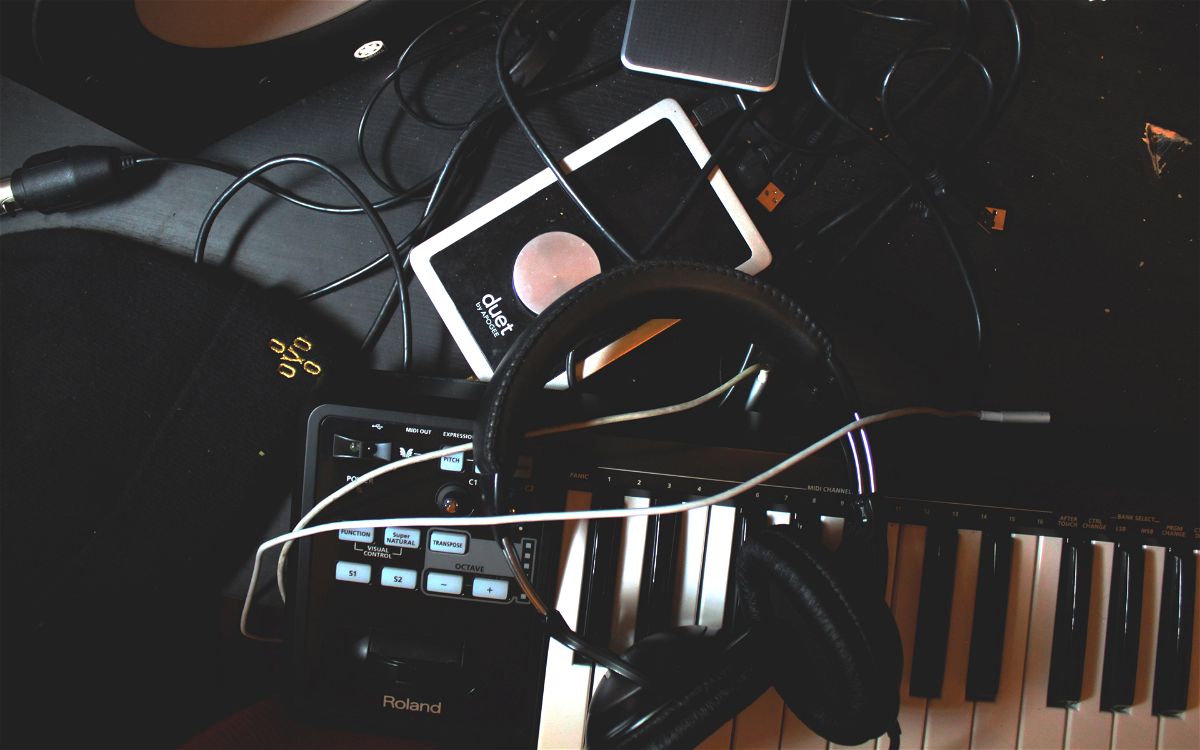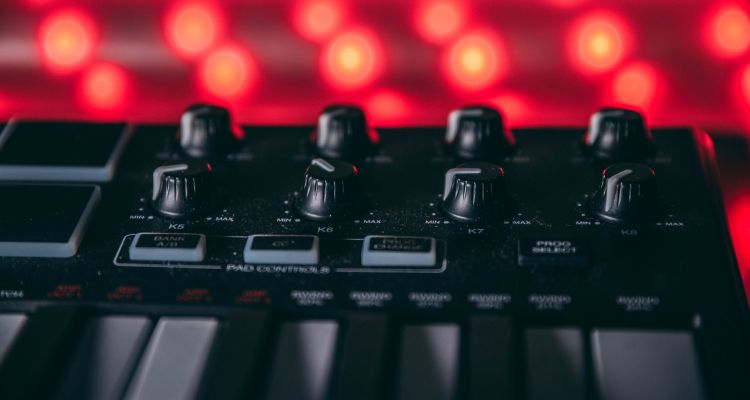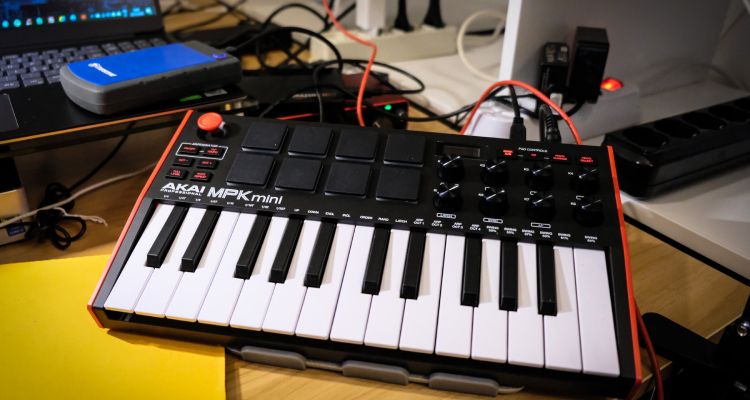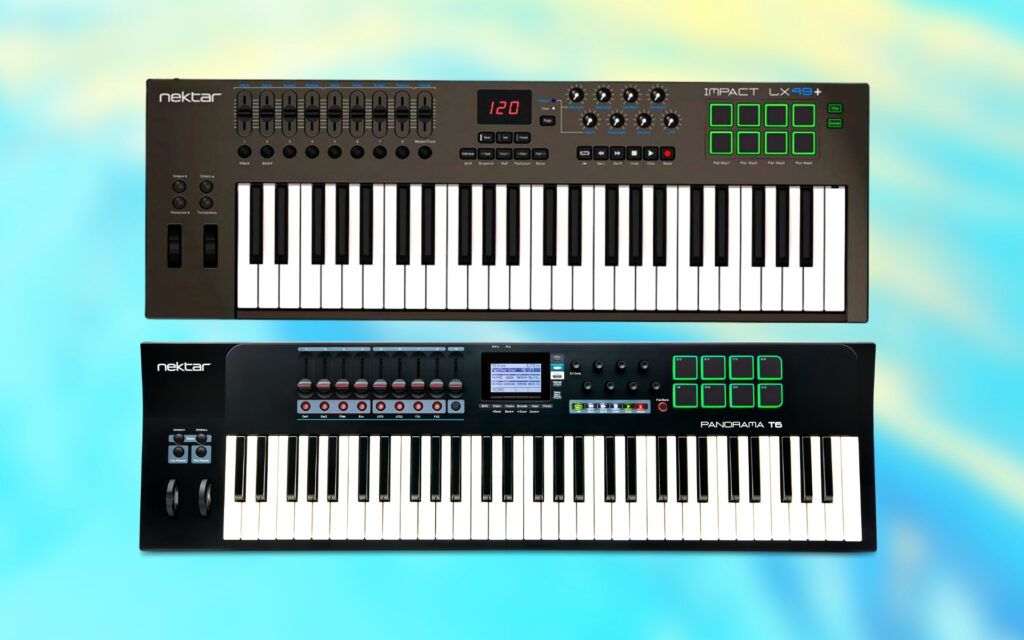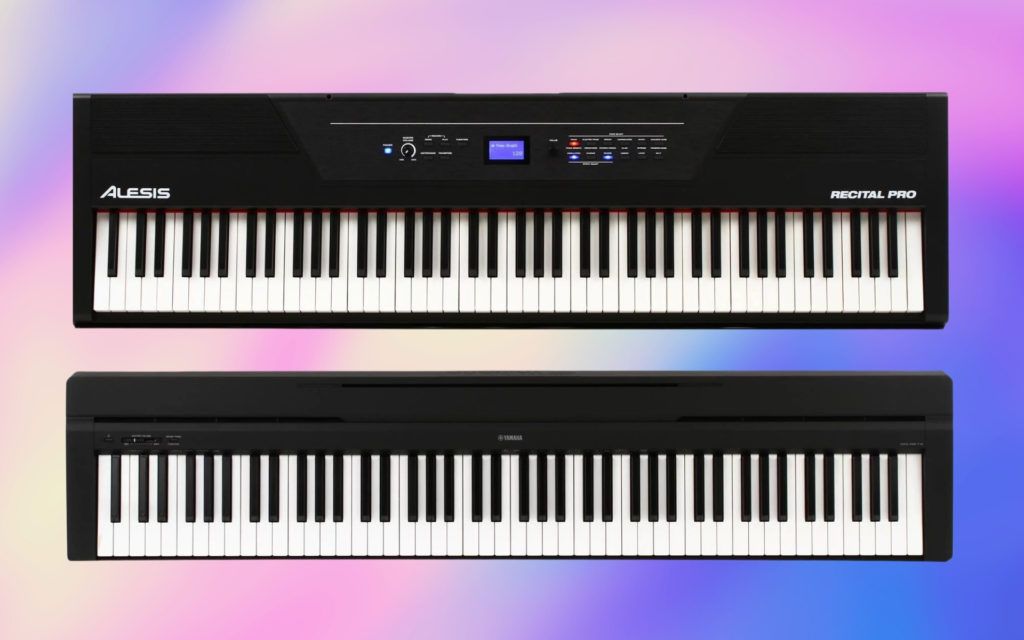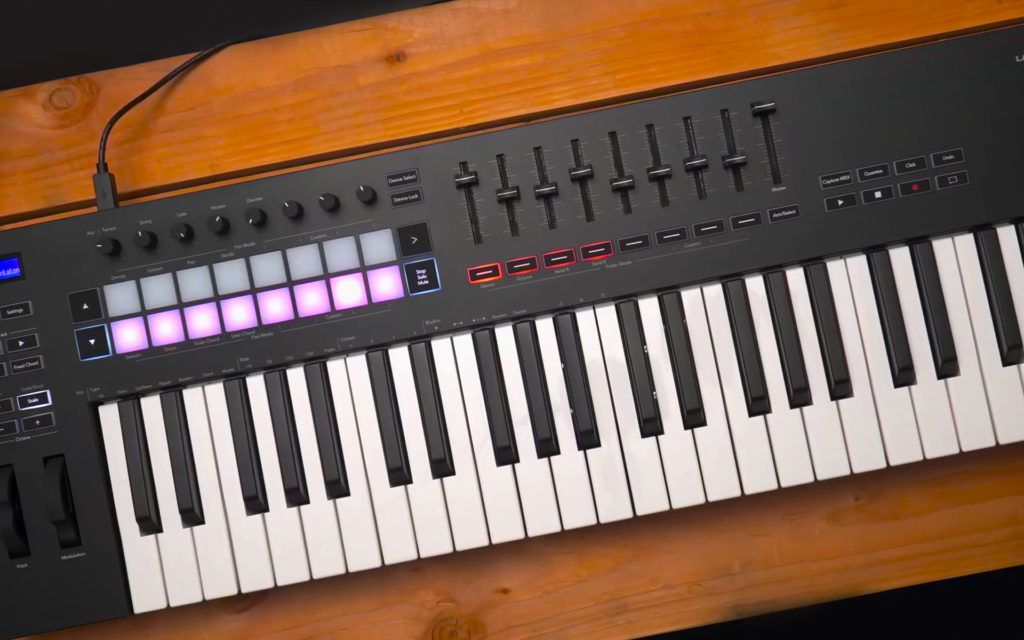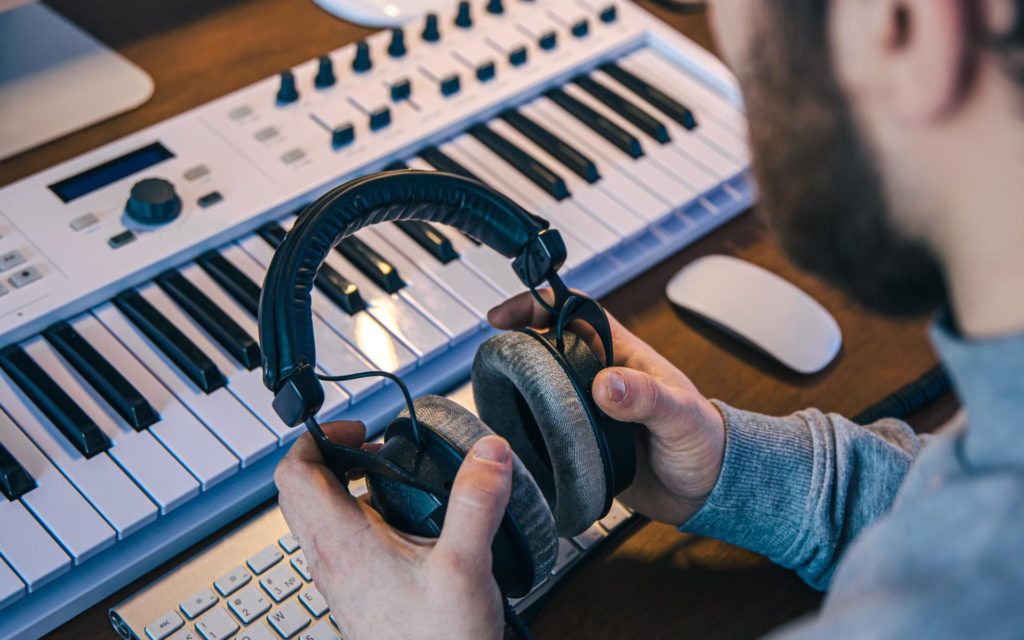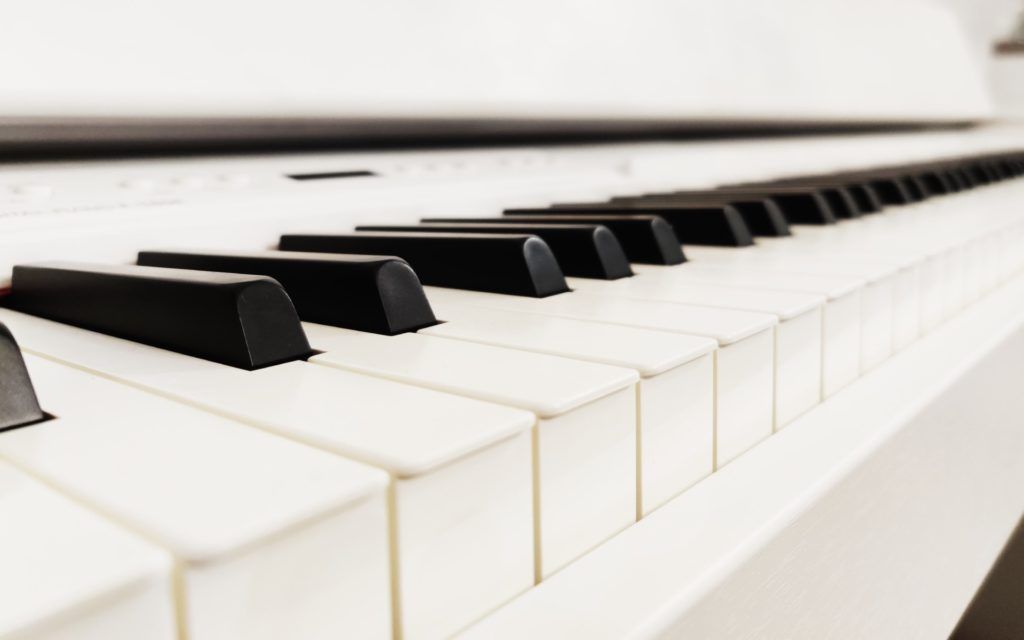MIDI keyboards have had a huge impact on the way music is made. Typically, they are used to input notes while using certain sounds within a DAW, but they also allow you to control a range of other parameters.
If you regularly use a MIDI keyboard to produce music, you’ve probably run into some of the common issues that occur with these devices. This could include problems with latency, connectivity, or dynamics.
In this guide, we’ll look at the potential reasons that your MIDI keyboard sounds quiet. We’ll then provide you with a step-by-step guide on how to fix a quiet MIDI keyboard so that you can get back to making music at full volume again as quickly as possible.
How Do You Fix a Quiet MIDI Keyboard?
The most effective way to fix a quiet MIDI keyboard is by changing the velocity settings. Velocity settings control the volume of the MIDI keyboard, by altering the way it reacts to how hard or softly the keys are played.
MIDI Keyboard and Velocity Settings
If your MIDI keyboard sounds quiet or is making no sound at all, the most likely reason for this is the velocity settings.
Thankfully, this can usually be corrected by simply adjusting the velocity settings within your recording software or DAW.
What Is Velocity?
MIDI keyboards produce no sound by themselves, but rather act as a trigger for an external sound. When a key is pressed, the MIDI keyboard activates the voltage within the circuit, and this is then transformed into audio.
So what exactly is velocity? Put simply, velocity determines the rate of the alterations of the voltage and is related to the force and speed with which you push the keys.
The MIDI controller uses the velocity settings to determine how loud the sound will be in relation to the way the keys are pressed. The higher the velocity is set to, the louder the sounds produced will be. Likewise, if the velocity is set to a low value, it will take more force to create an audible sound from the MIDI keyboard.
If your MIDI keyboard sounds quiet, it’s likely that you’ll need to increase the baseline velocity setting. However, it’s important not to set the velocity too high, or you will have the opposite problem and every time you press a key the sound will be overly loud.
How to Adjust The Velocity of Your MIDI Keyboard
Adjusting the velocity of your MIDI keyboard will require you to go into the settings menu of your preferred DAW. Although all DAWs are laid out slightly differently, the process will be similar whether you’re using Logic, Ableton, Pro Tools, and so on.
Start by locating the MIDI settings in your DAW. This will either be found under the settings tab, or it may be listed as “preferences”.
Open the MIDI settings, then locate the adjustable velocity parameter. In Ableton, the velocity is measured in terms of range, with 1 being the minimum and 127 being the maximum setting.
By decreasing the range of the velocity, you will cause the quieter notes played on the MIDI keyboard to be increased in volume. This is similar to compression, as you are essentially limiting the dynamic of the MIDI information.
DAW Level Settings
If you’ve adjusted the velocity settings of your MIDI keyboard in your DAW but you’re still experiencing quiet audio, this could be a sign that you need to adjust some other settings related to volume.
Checking Your Levels
Every sound that you load into a track within your DAW has an individual level setting that affects its volume. While you may think that it is your MIDI keyboard causing the audio to be quiet, it may be due to the settings on that track.
The best way to check the levels of the tracks in your session is by opening the mixer. This will display all of the individual channels at the same time, with a visual level meter for each track.
By default, the levels of each track should be set to 0dB. If you’ve processed some of the tracks, or accidentally adjusted the levels, this may be what is causing certain sounds to seem quieter than others.
Hit play in your DAW and analyze the visual level meters of each track. If some are reaching much lower levels than others, consider increasing the volume of these tracks to see if it solves the problem.
If one of the MIDI instruments in your session is set to a low volume, it will cause it to sound quieter when you are playing your MIDI keyboard with that sound selected.
Monitor and Headphone Levels
Another potential reason for your MIDI instruments sounding too quiet is the level settings of your monitors and headphones.
If you’re using an audio interface, the device will have individual controls which set the output level of headphones and monitors. If these levels are set too low, the entire mix will sound quiet.
Check that the levels on your audio interface are set adequately so that you can hear the MIDI instruments and other tracks in your session. It’s easy to adjust the wrong control by accident, which may be why you’re experiencing quieter audio than usual.
Other Reasons for a Quiet MIDI Keyboard
In the majority of cases, a quiet MIDI keyboard is caused by the velocity settings. However, if you’ve checked these settings and the problem persists, you need to take some additional steps to identify what’s causing the issue.
VST Plugin Settings
MIDI keyboards are predominantly used to trigger sounds of VST plugins and MIDI instruments. Plugins have the ability to reproduce the sound of acoustic or electronic instruments and add effects to your recordings.
One potential cause for your MIDI keyboard producing low volumes is that the level of the VST plugin or MIDI instrument is set too low.
Most VST plugins have their settings that are independent of the controls found in the mixer section of your DAW. Therefore, even if you’ve set the level in your DAW to 0dB, the level of the plugin itself could be set to a much lower value.
Open up the VST plugin or MIDI instrument you want to record, and check whether it has a control for setting the level. Then, increase the value of this setting and see if that makes the audio louder when playing your MIDI keyboard.
Additionally, the sound you’re using with your MIDI keyboard may have a filter applied to it or some EQ settings which are limiting its overall volume. Experiment by changing these settings, and monitor whether that increases the volume of the notes played on the MIDI keyboard.
Could Your MIDI Keyboard Be Broken?
After you’ve exhausted all of the above methods for fixing a quiet MIDI keyboard, it may be time to consider whether the device has broken or malfunctioned.
A good quality MIDI keyboard should last for many years, but as is the case with all electronic equipment, there is a chance that it could suddenly stop working properly.
The part of the MIDI keyboard that is most likely to become faulty is the circuit board. Unless you’re experienced with electronics, it is not advised to take the circuit board apart as this could cause further damage to the device.
If you feel confident enough to attempt electronic repairs, you can take the MIDI keyboard apart and analyze it for any faulty components that may need replacing.
Most music stores will happily repair your MIDI keyboard for a small fee, so if you’d rather keep yours than invest in a new one, it might be best to take it to an expert and get their opinion.
Faulty Cables
When MIDI keyboards were first invented, they were used with a specific MIDI cable. However, modern MIDI keyboards are mostly connected to a computer or laptop via USB.
USB cables tend to be very robust, but there is always a chance that they could break or become faulty. It’s therefore worth trying your MIDI keyboard with a different USB cable to see if that solves the problem of it being too quiet.
There are many USB MIDI cables out there, and some are superior in quality to others. The problem could simply be caused by using a low-quality USB cable that is struggling to transfer the MIDI information from the keyboard to your DAW.
Summary
There’s nothing more frustrating for a musician or producer than their equipment malfunctioning when they feel inspired to create. MIDI keyboards, like all musical equipment, have the potential to become faulty over time.
Hopefully the tips I’ve provided in this guide have helped you to get your MIDI keyboard back to an optimal volume level.

